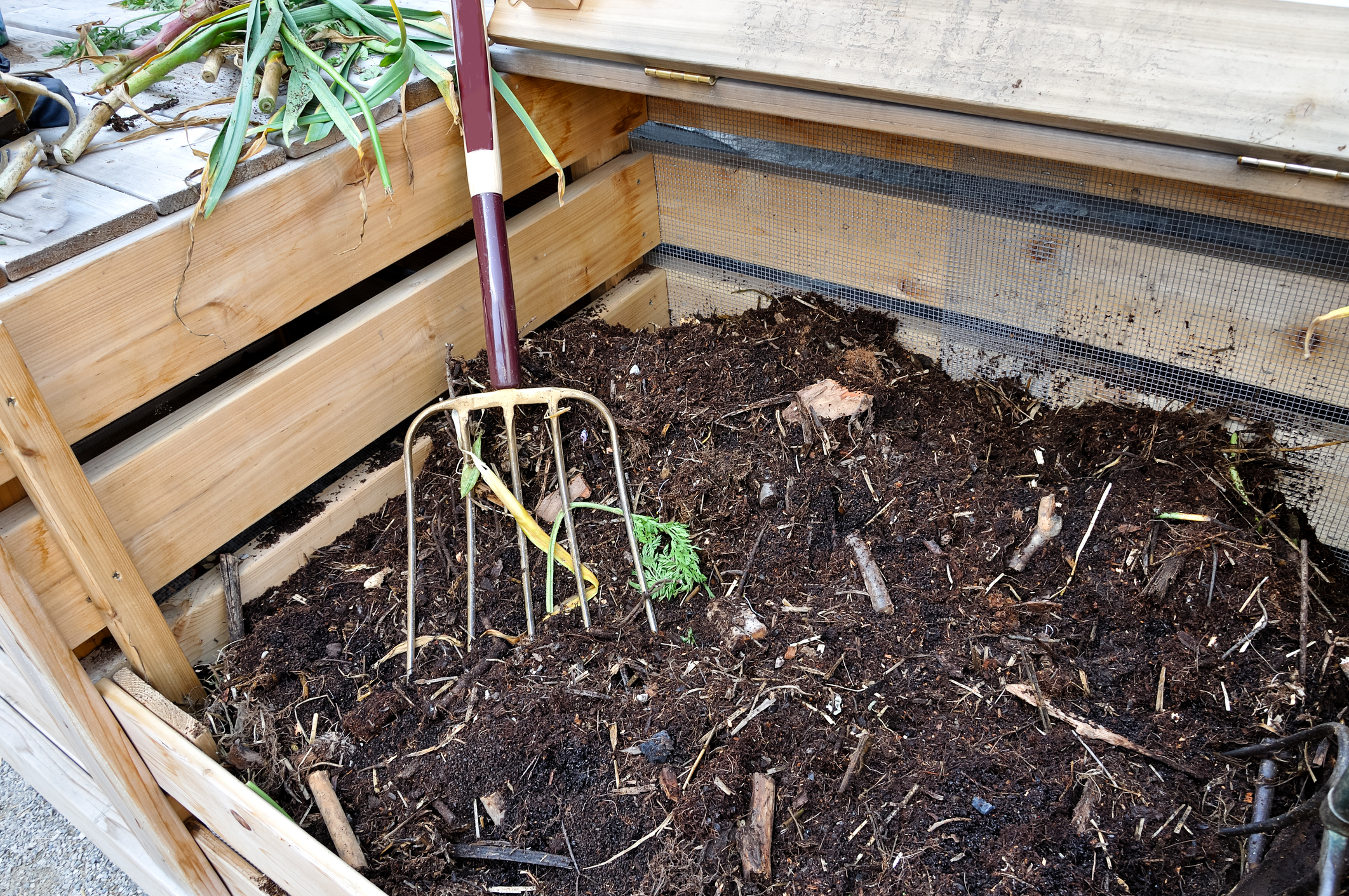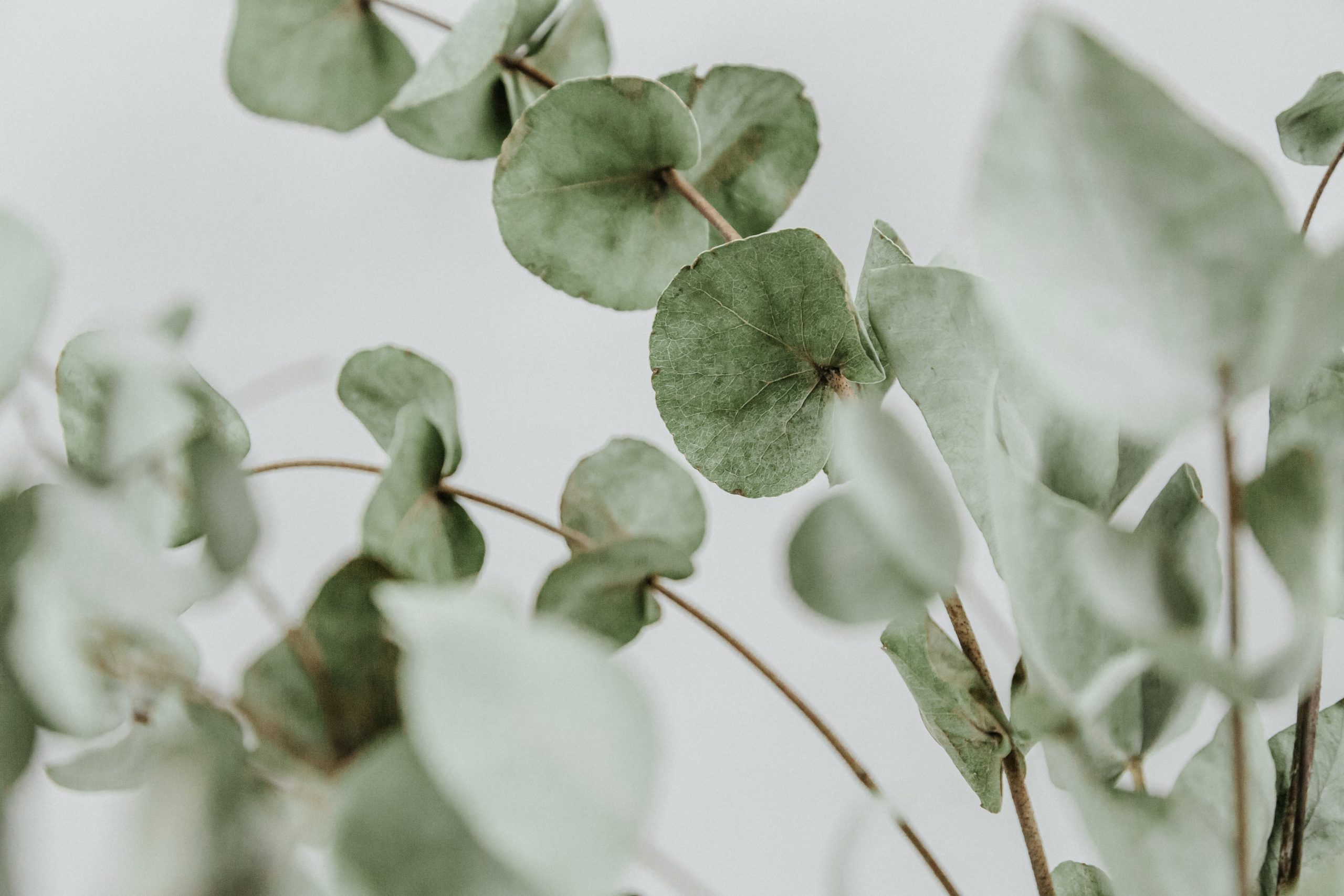
Want a simple compost pile for your garden without much work or fuss? A leaf compost is just what you need. Easier to start and maintain than an all-encompassing kitchen and yard compost pile, leaf composts are a great solution. They need less attention, they won’t attract animal guests like that food-based pile and you don’t have to haul 37 bags of leaves all the way out to your curb.
NUTRIENT DENSE AND EASY TO TEND
While not as diverse in nutrients as a veggie and fruit compost, leaf compost and humus still produce lovely, nutrient-rich food for your yard and garden. The humus improves the tilth of both sandy and clay types of soils, giving each what they need in terms of water retention or drainage, nutrient density and root development. The slightly more granular compost helps keep your dirt loose and primed for seed germination and healthy root development. How to know whether you’ve got compost or hummus? Anthony, at helpmecompost.com, explains, “When the organic matter has almost completely decomposed, it becomes a stable material called humus. But waste materials that are still actively decomposing are called compost.”

All your leaf compost pile needs are four ingredients: water, oxygen, nitrogen and carbon.
Leaf compost is happiest with a mix of leaves , but if you’ve only got one or two trees, don’t let that stop you. You may just have to help the Ph of your compost along with some added grass, other plant clippings, coffee and tea grounds. All your compost pile needs are four ingredients: nitrogen, carbon, oxygen and water. You’ve got the carbon from the leaves, the oxygen from turning your compost over, the water from watering, and the nitrogen from coffee or tea. But we’ll get into all of that in a minute.
It’s really as simple as finding a spot in your yard with good drainage and piling up some leaves. You can let your pile be free form, or you can build it a wood or wire frame. If your climate is arid and dry, wood is a great choice, if on the other hand, it’s damp, foggy or rainy, (aka Half Moon Bay, Pacifica, Montara) netting or wire is better for helping your pile breathe and not get soggy. In those climates you may also want to cover it with a tarp or lid.
WATER
Whether it’s wet or dry where your leaves are, your compost pile wants to be between 40-60% water. If you live in a dry area, you’ll probably want to water once or twice a week. If it’s rainy and damp, you won’t need to water much if ever. Your battle may be with keeping your compost dry enough. If this is the case you can always add newspaper (just the black and white stuff) or recycle your cardboard in your pile instead of the bin. Your compost should feel damp, not soggy and heavy or fluffy and dry. It should not have an odor other than something like the forest floor smells on a fall hike.
OXYGEN
You’ll add oxygen to the mix by turning your pile over every four to five weeks. Work from the inside out and the outside in. Lift the middle where your compost is hottest and most active to the outside, and churn the outside where not much is decomposing to the inside. It’s easier to do this if you’ve got an open pile or if your frame is only three sided.
COFFEE (OR TEA) AKA NITROGEN
Adding grass, yard clippings and coffee or tea grounds will up the nitrogen content and help your leaves break down. Grass can be tricky as it tends to clump and layer to itself – think of how wet grass sticks to your bare legs and clothes. So if you’re going to use grass, let it dry first and add it in small batches. Be aware of adding anything that has been treated with an herbicide, as herbicides will inhibit the composting process and you don’t want to add those chemicals back into your edible garden. Also be aware that if you drop in weeds, you may find them popping up their little heads in between your lettuces. Just don’t drop the seeds in the compost and you’ll be fine.
CARBON
Your compost pile will get all the carbon it needs from the leaves and other yard scraps you put in.
EUCALYPTUS, OAK LEAVES AND PRE-SHREDDING OH MY

There are a few leaves to avoid: eucalyptus, horse or sweet chestnut, walnut, beech and holly.
If you’ve ever walked through a grove of eucalyptus, maybe at Stanford, or you’ve strolled through just about any neighborhood on the peninsula or in San Francisco, you’ve seen a eucalyptus tree, and you may have noticed that nothing grows beneath the canopy of its leaves.
That’s because eucalyptus are allelopathic trees. Allelopathy can be positive or negative, but eucalyptus trees inhibit the growth of anything other than themselves – good for them, bad for native plants and diversity. Angelo Eliades of Deep Green Permaculture writes,, “Many trees use allelopathy to protect their space by using their roots to pull more water from the soil so other plants cannot thrive. Some use their allelochemicals to inhibit germination or impede the development of nearby plant life.”
It’s the prevention of germination or other plant life that we’re concerned about in our compost. Black walnut leaves contain natural herbicides, so stay away from these as well.
OTHER LEAVES TO AVOID
As for the rest of the leaves to avoid – beech, holly, and the chestnuts – their leaves are higher in lignin and lower in nitrogen and calcium, so they’re not toxic for your compost, they just won’t degrade as quickly or add as many nutrients.
Some will tell you not to include oak leaves, which in Northern California could be a challenge. The key to including oak is to shred it first, because its leaves take a long time to break down. It’s not a bad idea to shred all of your leaves, it will make your compost pile do its thing faster. You can use your mower and collect the chopped leaves in the mower bag, invest in a shredder or have your kids jump on them.
WHICH LEAVES DOES THAT LEAVE
So which leaves are good for your compost? The best ones are the ones you have access to – and don’t limit yourself to your own yard. Your neighbors will probably start bringing you pie if you start collecting their leaves for them.
The ultimate leaf compost mix would include maple, birch, ash, cherry, cottonwood and fruit trees. But we beg you, don’t let perfect get in the way of good enough. Any leaf compost pile is going to work and all you have to do to get going is pile up some leaves, grab your kids, your partner or your friends, jump all over them, add a little water if they’re dry, throw your morning grounds on top and mix it up every month.
Easier than pie. Really. Pie is a lot of work.
If you’ve got questions, we love to give answers. Please reach out through our chat, call us or come on in and we’ll help you get everything you need for your leaf compost pile.
Use this code at checkout – in store only – to get 15% OFF any single item.*

*In store only. Not applicable for online purchases at acehardware.com. Excludes sale items, prior purchases, services, rentals, gift cards, classes, ALL grills and grill brands including Big Green Egg, Weber, Traeger. ALL power tools and power tool brands, Milwaukee Pack Out Rolling Tool, YETI, STIHL, Cabot, Wavestorm, Stormblade, Lego, ALL outdoor power equipment, bicycles and paint. Hassett Hardware reserves the right to exclude any brands not listed here. May not be combined with other discounts or offers. This coupon does not apply in any way to any items, services, repairs, brands or sales at Powered by Hassett. In stock items only. Valid in store only. Other exclusions may apply. One time use only. Cashier will keep this coupon at checkout.
